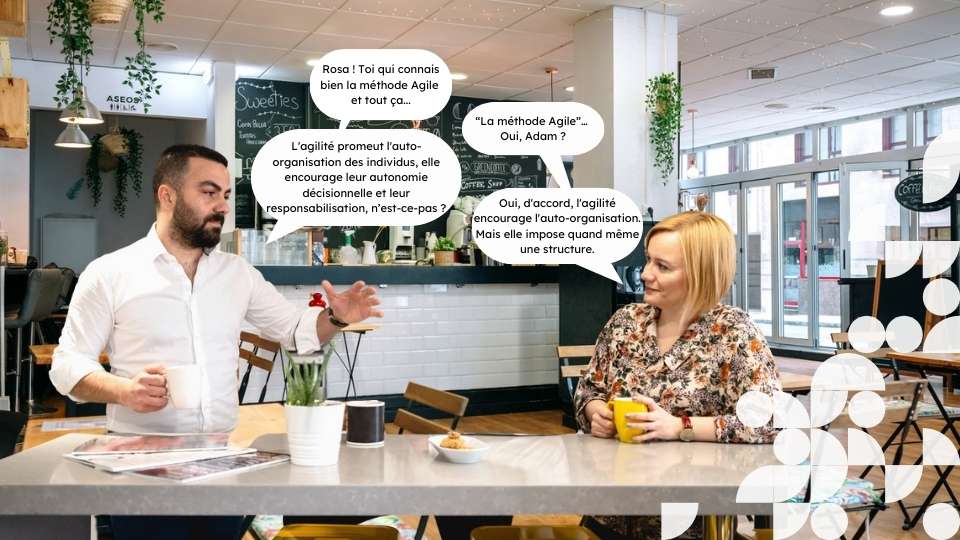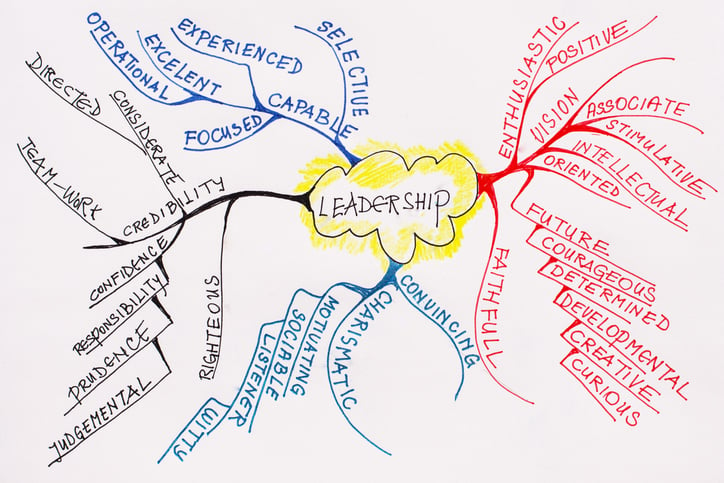Since the mid-19th century, the debate about the primacy of Structures or Agents over our behavior has been raging among social science theorists. What's it all about? The Structuralist hypothesis holds that structures - organizations and the rules and processes that govern them - impose their law on the individuals who inhabit them. The Agentive Hypothesis, on the other hand, asserts that individuals are independent and free to make their own choices, which they ultimately impose on structures.
The controversy has fascinated thinkers such as Karl Marx, of course, as well as the many researchers who have worked on this question: Georg Simmel, Norbert Elias, Pierre Bourdieu and many others have tried to resolve the tension between Structure v.s. Agent, to reconcile or reconcile it. Agent, to reconcile or overcome it, for example with the Actor-Network theory, developed in France by Bruno Latour and others.
This controversy regularly emerges in public debate, for example in France when it comes to institutions such as the Police or the Department for Education. But what do we Agilists have to say about the place of Agility in this debate? Does Agility serve Structures, or Agents?
Let's try to answer this question in a light-hearted way, in the form of a short play.
Attention... the curtain is going up!
Act 1, scene 1
The Sprint Retrospective ended just a few minutes ago. In the cafeteria adjoining the small Open Space, where the team is arguing about the number of times the number 1 appears in the Fibonacci sequence (once? twice?), Rosa, Scrum Master, is contemplating the difference between a number and a digit. First of all, what's the difference between a number and a digit?), Rosa, Scrum Master, pensively contemplates the coffee she has just poured herself. Suddenly, disturbing this welcome calm, the door opens to reveal Adam, the Product Owner, who calls out to her:
Adam - Rosa! You know all about Agile and all that...
Rosa (frowning) - "The Agile method"... Yes, Adam?
Adam - Agility promotes the self-organization of individuals, it encourages their decision-making autonomy and their empowerment, doesn't it? So it's really the individual who takes the initiative and influences the work environment?
Rosa (somewhat surprised by this question) - Euh... Yes, agility encourages self-organization. But it still imposes a structure. You see, it defines a framework, made up of roles and processes. These frameworks are embodied in Frameworks, like Scrum for example...
Adam - Scrum?
Rosa - Yes, Scrum. Adam, we've been doing that for over 6 months, and we've just completed sprint 12... I'm a Scrum Master, remember?
Adam - …
Rosa (sighing) - Anyway... (resuming) So, Scrum, SAFe, LeSS etc... They're Frameworks, in other words they're structures, and these structures are imposed on the teams and individuals who apply them.
Adam (opportunely recalling that inspiring TedEx he'd seen that very morning) - Wait, actually, rather than structure, I'd rather talk about culture: culture of transparency, culture of feedback... Because while it's true that agility fosters a specific culture, it also encourages individuals to positively influence that culture!
Rosa (doubtful) - Really?
Adam - Of course! For example. Look at inspirational leaders like me! They're encouraged to emerge from their teams and promote the Agile culture within their organization. By capillarity!
Adam sketches what looks like a few steps of a South American dance, then pauses when he realizes that Pierre-Joseph, backend developer, has entered the cafeteria, and is watching him, amused.
Act 1, scene 2
Pierre-Joseph can't help but react and jumps in with both feet.
Pierre-Joseph - Yes, Adam, the real impact of these Agile Champions in promoting Agility within the organization remains to be demonstrated!
Adam (outraged) - What do you mean? Well, I...
Pierre-Joseph (cutting him off) - Besides, a competent and responsible team knows how to take care of itself, without the need for Agile Champions, Product Owners or Scrum Masters or whatever.
Rosa - Sorry?
Pierre-Joseph - ... And what we definitely see in teams, on the other hand, is the mutual influence that each individual exerts on his or her peers.
Adam - Meaning?
Pierre-Joseph - Well, team members share common objectives. They work very closely together on a daily basis. They hold each other accountable for both successes and failures. And this naturally leads them to adopt collective standards, on their own...
Rosa (interrupts) - Collective norms, yes, which then impose themselves on the group: always the structure!
Adam - And Martin Luther King, is that a structure perhaps? It's men who shake up your structures, and make the world move!
Pierre-Joseph and Rosa are about to answer when suddenly a door slams. Out of the corner of her eye, Rosa sees the post-it notes flying around the Kanban board... Who has opened the windows again? She puts down her cup adorned with David Graeber's mocking face, and trots towards the exit, followed by Adam.
Act 2, scene 1
Rosa heads for the half-open window to close it as quickly as possible. Adam follows.
Rosa - Okay, Adam, but organizations aren't all populated by Martin Luther King and great inspirational leaders. Everyone must be able to express themselves, according to their qualities.
Adam - But Rosa, by valuing collectives rather than individuals, Agility gives everyone the opportunity to participate in the way that suits them best in the team's success.
Rosa - Yes.
Adam (musing) - So it's the exact opposite of an organization that would only value certain behaviors or qualities, rather than others. There's room for freedom.
Rosa - Be careful, though. It's true that agility promotes modes of communication and collaboration that frame and secure interactions between individuals. But poorly practiced, the risk is to inhibit or sanitize heterodox individual expression that deviates from the framework. In the end, even to the exclusion of members who do not respect the framework...
Adam - Are you thinking of Pierre-Joseph?
Rosa (smiles) - Well, maybe... (resuming) But anyway, isn't it precisely from these margins, on the edge of the framework, that innovation springs, Adam?
Adam (interested) - Of course! Thanks to collective intelligence, of course. And active listening. And benevolence.
Rosa (mocking) - Wow, that's a full house!
Adam - Sorry, what are you saying? (resuming his thoughts) Anyway, we agree!
Act 2, scene 2
They're now just a few steps away from the Kanban board, the team has fallen silent, hands floating motionless a few centimetres from the keyboards. Everyone is listening attentively. Except, of course, Pierre-Joseph, from the back, his helmet now screwed on his ears, humming a familiar tune while frantically shaking his head.... God save the queen?
Adam (continuing) - Anyway, when it comes to agility, the answer is usually to be found in the Manifesto itself. You say that every time I want to take a disruptive initiative! A quick glance at the Agile values is enough to nip the debate in the bud: People and their interactions, collaboration, adapting to change... That's Agentivity!
Rosa - Of course... (slowly picking up a post-it note that's fallen on the floor) But how do you think these values apply to individuals, Adam? Don't they come from the very structures that allow them to be expressed? So Agility does define the structure that enables individuals to act...
Adam (interrupting) - … to act to make the structure evolve! We've come full circle.
Rosa - Yes, precisely! (smiling mysteriously) But will Agile ever allow individuals to evolve the structure to the point of surpassing it? (her gaze then turns to the whole team) We'll see on Monday!
Rosa picks up the last post-it note, which reads "Fix the bugs", and sticks it on Adam's surprised forehead. It's decided, next week she'll stick them all on JIRA!
Conclusion
Rosa and Adam have managed to find an answer that satisfies them both. But they haven't solved the old Structure v.s. debate. Agent, which has been going on for over a century - and will doubtless continue to agitate our curious minds for a long time to come.
So, what do you think?




